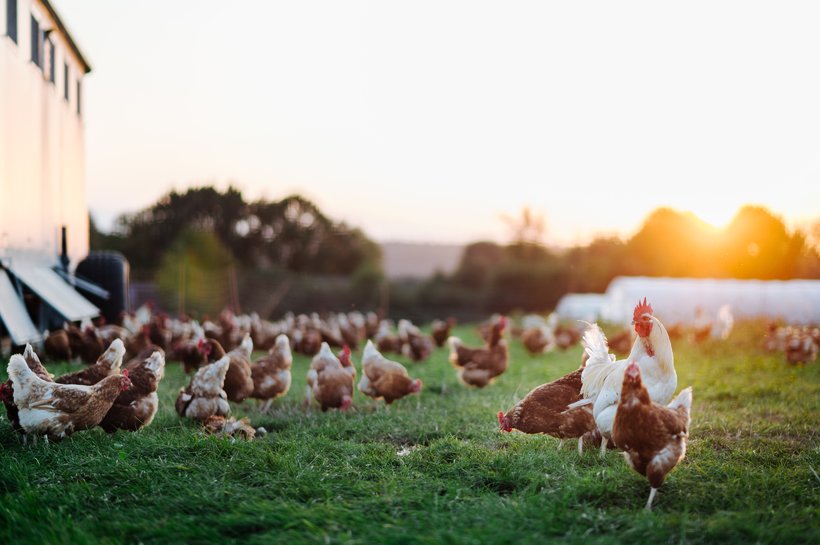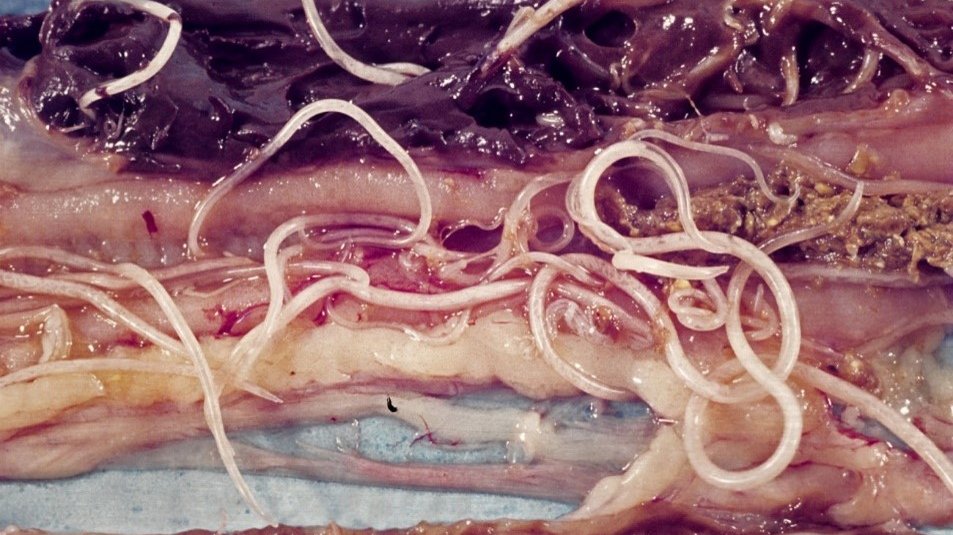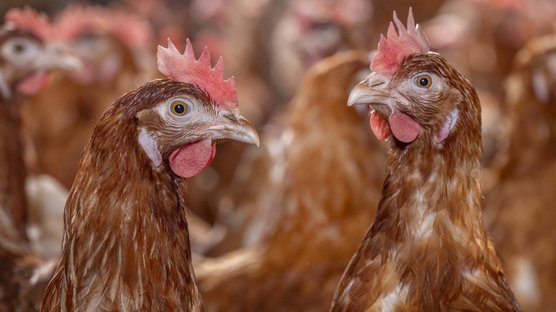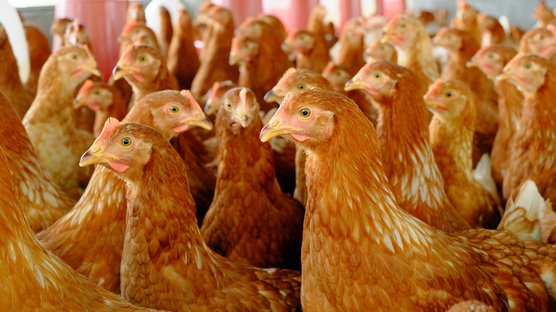
Published on April 4, 2023
Helminthiasis (worms)
Helminths, commonly called worms, are endoparasites living mainly in the gastrointestinal tract of poultry. While keeping pullets and layers in cage system had reduced the prevalence of helminthiasis, worm infestation is still frequent in floor-reared birds, backyard flocks and especially in free-range systems, and it can be considered an emerging disease in alternative cage-free systems.
Impact of worms parasitisation will depend on intensity of the infection, but it causes reduced health and welfare, and has a negative effect on growth and production performances.
Many different species of helminths can affect commercial poultry: most common worms belong to two classes:
Nematodes or round worms.
Life cycle is direct for some species while others need an invertebrate as intermediate host (earthworms, snails, insects…). Most important in this group are:
- Ascaridia galli (large roundworms): usually 5 – 10 cm long, living in the small intestine
- Capillaria spp. (hairworms): approximately 1 cm long, living in the small intestine
- Heterakis gallinarum (caecal worms): 1 – 1,5 cm long, living in the caeca (blind gut)
- Syngamus trachea (gapeworm): living in the trachea
Cestodes or tapeworms.
These parasites are made up of many small flat segments and require an intermediate host to complete their life cycle. Most important in this group are:
- Davainea proglottina (small tapeworms): up to 2 cm long, living in the duodenum
- Raillietina spp. (large tapeworms): variable size, up to 25 cm and beyond. living in the small intestine.
Adult worms produce eggs that are excreted with the droppings and under favourable environmental conditions (humidity, temperature) develop to an infective stage. Birds become infected when they ingest either eggs or larvae or the intermediate host. Insects (darkling beetles, flies…) can also act as mechanical vectors.
Clinical signs
Symptoms of worm infestation will depend on the parasite load, but generally include reduced growth (even weight loss), poor uniformity, diarrhoea, anaemia (pale combs) and decreased egg production. Egg quality is also affected, and usually there is an increase in the number of seconds and pale eggshells, and also pale yolks; although incidence is rare, in some cases worms can be found inside an egg, if adult parasites migrate from the cloaca to the oviduct.
In breeder flocks, lower fertility and hatchability is usually observed.
In extreme cases, heavy worm infestation can lead to death.
Birds infected by gapeworms show respiratory signs: gasping, shaking of the head and stretching the neck and opening their mouth to get some air.
Worms also produce indirect damage, as infested flocks usually express more pecking behaviour and are more susceptible to other diseases.
Although caecal worms usually do not cause serious damage, Heterakis gallinarum can carry Histomonas meleagridis, a protozoan parasite that causes histomoniasis (blackhead). Chicken can become infected if they consume infected worm eggs or earthworms containing these infected eggs.
Diagnosis
Diagnosis of worm infestation can be made by identification of the parasites at post-mortem examination: larger species can be easily identified at naked eye while smaller worms and parasite eggs may require examination under microscope.
It is recommended to schedule regular worm check by opening up some birds every few weeks.
Worm eggs can also be detected in the droppings by fecal flotation and microscope examination.
Treatment and control
Antihelmintic products most commonly used in commercial poultry worldwide for treatment are piperazine, levamisole and compounds from the family of the benzimidazole drugs such as flubendazole and fenbendazole, via feed or drinking water. Most of the products active against roundworms are not effective against tapeworms. Before using any medication, it should be checked if the product is registered and approved for treatment of poultry in the country and, in production flocks, if there is an egg withholding period to be respected.
A common practice is to set a prophylactic treatment at the rearing farm just before transferring the birds to the production house.
Control of worm infestations involves not only treating birds against worms, but also proper cleaning and disinfection, adequate husbandry, and proper coccidiosis control. Controlling tapeworms infection requires breaking the reproductive cycle of the parasite by eliminating the intermediary hosts.
In free range systems, to prevent worm problems, grass enclosure should be used in rotation and may be treated with products able to destroy parasite eggs (calcium cyanamide, ferrous sulphate).




